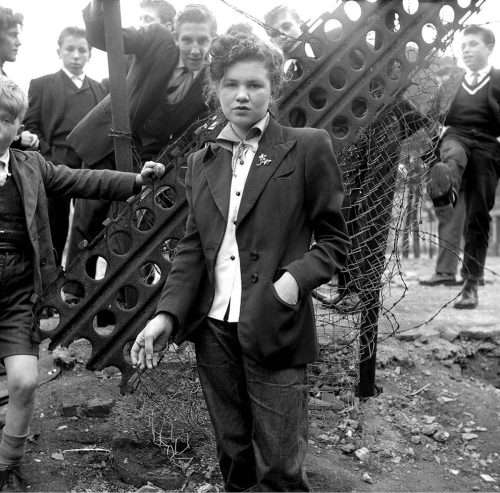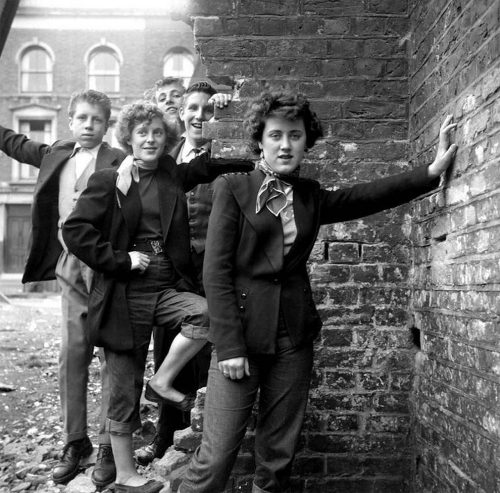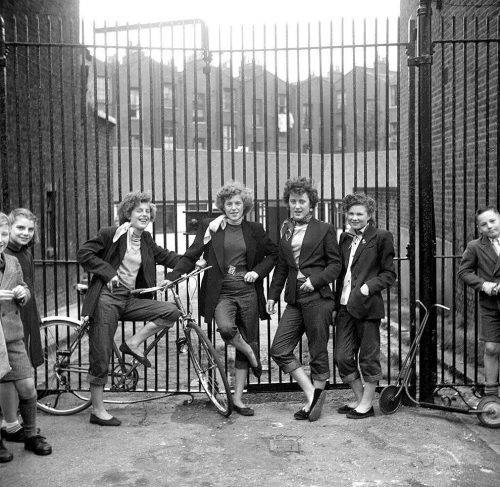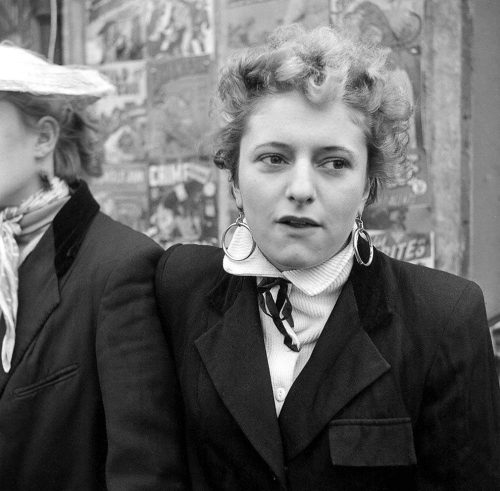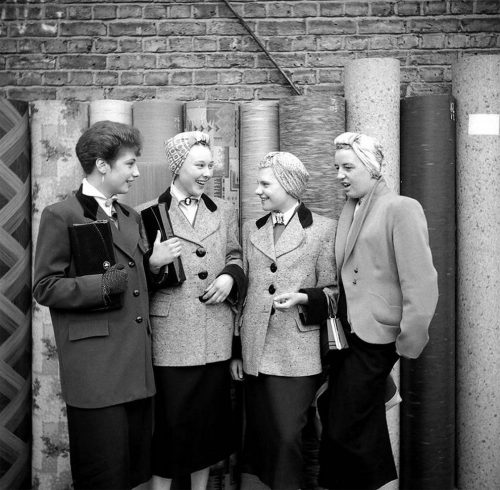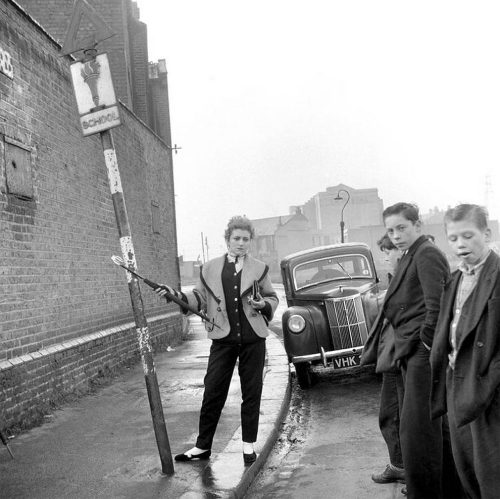Hearing With Your Eyes – A Western Style Of Speech Perception
Hearing with your eyes – A Western style of speech perception
Which parts of a person’s face do you look at when you listen them speak? Lip movements affect the perception of voice information from the ears when listening to someone speak, but native Japanese speakers are mostly unaffected by that part of the face. Recent research from Japan has revealed a clear difference in the brain network activation between two groups of people, native English speakers and native Japanese speakers, during face-to-face vocal communication.

It is known that visual speech information, such as lip movement, affects the perception of voice information from the ears when speaking to someone face-to-face. For example, lip movement can help a person to hear better under noisy conditions. On the contrary, dubbed movie content, where the lip movement conflicts with a speaker’s voice, gives a listener the illusion of hearing another sound. This illusion is called the “McGurk effect.”
According to an analysis of previous behavioral studies, native Japanese speakers are not influenced by visual lip movements as much as native English speakers. To examine this phenomenon further, researchers from Kumamoto University measured and analyzed gaze patterns, brain waves, and reaction times for speech identification between two groups of 20 native Japanese speakers and 20 native English speakers.
The difference was clear. When natural speech is paired with lip movement, native English speakers focus their gaze on a speaker’s lips before the emergence of any sound. The gaze of native Japanese speakers, however, is not as fixed. Furthermore, native English speakers were able to understand speech faster by combining the audio and visual cues, whereas native Japanese speakers showed delayed speech understanding when lip motion was in view.
“Native English speakers attempt to narrow down candidates for incoming sounds by using information from the lips which start moving a few hundreds of milliseconds before vocalizations begin. Native Japanese speakers, on the other hand, place their emphasis only on hearing, and visual information seems to require extra processing,” explained Kumamoto University’s Professor Kaoru Sekiyama, who lead the research.
Kumamoto University researchers then teamed up with researchers from Sapporo Medical University and Japan’s Advanced Telecommunications Research Institute International (ATR) to measure and analyze brain activation patterns using functional magnetic resonance imaging (fMRI). Their goal was to elucidate differences in brain activity between the two languages.
The functional connectivity in the brain between the area that deals with hearing and the area that deals with visual motion information, the primary auditory and middle temporal areas respectively, was stronger in native English speakers than in native Japanese speakers. This result strongly suggests that auditory and visual information are associated with each other at an early stage of information processing in an English speaker’s brain, whereas the association is made at a later stage in a Japanese speaker’s brain. The functional connectivity between auditory and visual information, and the manner in which the two types of information are processed together was shown to be clearly different between the two different language speakers.
“It has been said that video materials produce better results when studying a foreign language. However, it has also been reported that video materials do not have a very positive effect for native Japanese speakers,” said Professor Sekiyama. “It may be that there are unique ways in which Japanese people process audio information, which are related to what we have shown in our recent research, that are behind this phenomenon.”
These findings were published in the journal “Scientific Reports” on August 11th and October 13th, 2016.
More Posts from Philosophical-amoeba and Others
Are Complex Numbers Really Numbers?
If you look through definitions of “number” most will say that numbers are used to represent quantities (amounts or measures). Whole numbers 0, 1, 2, 3, … are probably the first numbers that come to mind and they are often used to count things like say how may watermelons jimmy has. But when quantifying things like money, whole numbers are not always enough and so we have rational numbers (which include the whole numbers but also fractions and numbers with finite or repeating decimal expansions). Yet, sometimes even these numbers are not enough to express certain quantities. Pi, for example, is not a rational number but is certainly a number as it represents the quantity that is the ratio of a circle’s circumference to its diameter. It can be shown that the number pi has an infinite decimal expansion with no repeating patterns, and so a number like pi is called an irrational number. (Because they are silly? Although at first some thought so, the term irrational just means not rational.) More specifically, pi is a transcendental number as it is not the root of any polynomial. (Transcendental, because they transcend the usual notion of number? Idk. Again, strange names.) So, the rational numbers were extended to the real numbers to include both rational and irrational numbers. Either way, we see that both rational and irrational numbers are truly numbers since they can be used to represent quantities.
What about complex numbers though? Are they really numbers, or do people just call them “numbers”? So, we should ask, can complex numbers represent some amount or measure of something? Can jimmy have i watermelons? No, but jimmy can’t really have pi watermelons either and pi is a number. Jimmy may have a watermelon that weighs pi pounds though (the only way to know this would be if jimmy had a scale with infinite accuracy, which, turns out, he does). Okay but can jimmy have a watermelon weighing i pounds? That doesn’t seem to make sense. To see if complex numbers can represent quantities we need to elaborate on what complex numbers are exactly.
The complex numbers are the real numbers extended to include the square root of negative 1 (i) and all its multiples. They have the form a+bi where a and b are real numbers. i is called an imaginary number (named imaginary because, i is not a real number, but this implies numbers like i are somehow not “real”, in the usual English sense of the word (are any numbers really “real”?) again, with the names). What truly makes complex numbers different than the other numbers we have discussed is that they “live” in 2 dimensions (the complex plane); complex numbers (e.g., 7+2i) have a real part (7) and an imaginary part (2i). While real numbers (which include whole, rational, and irrational numbers) “live” in one dimension (they can be found anywhere on the number line).
So, a complex number is a sort of two-dimensional quantity, it has a real measure and an imaginary measure. This makes them strange as numbers. We know 12 is bigger than 11 and that there are a bunch of numbers in-between 11 and 12, but which is bigger 2-8i or 3+i? Complex numbers cannot be compared in the same way i.e., there is no way to order complex numbers from smallest to largest.
These properties make complex numbers more abstract than typical numbers we encounter day to day. Nevertheless, “complex numbers are useful abstract quantities that can be used in calculations and result in physically meaningful solutions. However, recognition of this fact is one that took a long time for mathematicians to accept.”—Wolfram MathWorld http://mathworld.wolfram.com/ComplexNumber.html
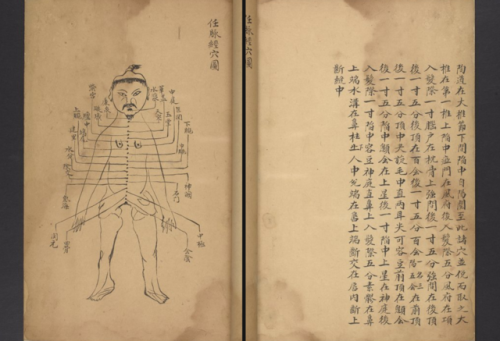
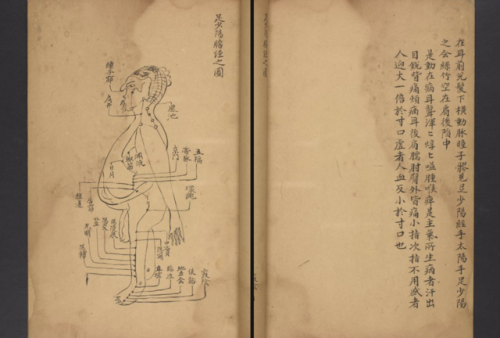



This week, we’re taking a look at manuscripts having to do with health, medicine, and human physiology specifically focusing on how bodies are displayed in manuscript illuminations or diagrams across different cultures.
LJS 389 shown above, is a 14th century Chinese treatise on the anatomy, physiology, and pathology of blood vessels titled Shi si jing fa hui. The manuscript is made from bamboo paper and the diagrams and kaishu script are written with black ink. Focus on the diagrams of the bodies and stay tuned this week to see not only how the details and forms of these depictions change from culture to culture, but also the mediums with which these manuscripts are created.
The full LJS 389 manuscript filled with more diagrams can be found on Openn: http://openn.library.upenn.edu/Data/0001/html/ljs389.html
and Penn In Hand: http://hdl.library.upenn.edu/1017/d/medren/4824235
Jumps, Explained
So, going by the tags on my recent jump gifsets, the difference between jumps is apparently still a source of great bewilderment for some people. Now I could link you to some excellent posts on the topic, but since I am, as usual, an extra lil piece of dirt with too much work to do and a lifetime’s worth of procrastination, I’ve decided to put together my own layman’s guide to identifying figure skating jumps (stressed on the layman part).
First, here be a flowchart, since everybody loves flowcharts, right?

If the flowchart works as intended and you can now tell the jumps apart, great! If you need a bit more explanation and illustration, read on.
Keep reading
List of medieval European scientists
Anthemius of Tralles (ca. 474 – ca. 534): a professor of geometry and architecture, authored many influential works on mathematics and was one of the architects of the famed Hagia Sophia, the largest building in the world at its time. His works were among the most important source texts in the Arab world and Western Europe for centuries after.
John Philoponus (ca. 490–ca. 570): also known as John the Grammarian, a Christian Byzantine philosopher, launched a revolution in the understanding of physics by critiquing and correcting the earlier works of Aristotle. In the process he proposed important concepts such as a rudimentary notion of inertia and the invariant acceleration of falling objects. Although his works were repressed at various times in the Byzantine Empire, because of religious controversy, they would nevertheless become important to the understanding of physics throughout Europe and the Arab world.
Paul of Aegina (ca. 625–ca. 690): considered by some to be the greatest Christian Byzantine surgeon, developed many novel surgical techniques and authored the medical encyclopedia Medical Compendium in Seven Books. The book on surgery in particular was the definitive treatise in Europe and the Islamic world for hundreds of years.
The Venerable Bede (ca. 672–735): a Christian monk of the monasteries of Wearmouth and Jarrow who wrote a work On the Nature of Things, several books on the mathematical / astronomical subject of computus, the most influential entitled On the Reckoning of Time. He made original discoveries concerning the nature of the tides and his works on computus became required elements of the training of clergy, and thus greatly influenced early medieval knowledge of the natural world.
Rabanus Maurus (c. 780 – 856): a Christian monk and teacher, later archbishop of Mainz, who wrote a treatise on Computus and the encyclopedic work De universo. His teaching earned him the accolade of "Praeceptor Germaniae," or "the teacher of Germany."
Abbas Ibn Firnas (810 – 887): a polymath and inventor in Muslim Spain, made contributions in a variety of fields and is most known for his contributions to glass-making and aviation. He developed novel ways of manufacturing and using glass. He broke his back at an unsuccessful attempt at flying a primitive hang glider in 875.
Pope Sylvester II (c. 946–1003): a Christian scholar, teacher, mathematician, and later pope, reintroduced the abacus and armillary sphere to Western Europe after they had been lost for centuries following the Greco-Roman era. He was also responsible in part for the spread of the Hindu-Arabic numeral system in Western Europe.
Maslamah al-Majriti (died 1008): a mathematician, astronomer, and chemist in Muslim Spain, made contributions in many areas, from new techniques for surveying to updating and improving the astronomical tables of al-Khwarizmi and inventing a process for producing mercury oxide.[citation needed] He is most famous, though, for having helped transmit knowledge of mathematics and astronomy to Muslim Spain and Christian Western Europe.
Abulcasis (936-1013): a physician and scientist in Muslim Spain, is considered to be the father of modern surgery. He wrote numerous medical texts, developed many innovative surgical instruments, and developed a variety of new surgical techniques and practices. His texts were considered the definitive works on surgery in Europe until the Renaissance.
Constantine the African (c. 1020&–1087): a Christian native of Carthage, is best known for his translating of ancient Greek and Roman medical texts from Arabic into Latin while working at the Schola Medica Salernitana in Salerno, Italy. Among the works he translated were those of Hippocrates and Galen.
Arzachel (1028–1087): the foremost astronomer of the early second millennium, lived in Muslim Spain and greatly expanded the understanding and accuracy of planetary models and terrestrial measurements used for navigation. He developed key technologies including the equatorium and universal latitude-independent astrolabe.
Avempace (died 1138): a famous physicist from Muslim Spain who had an important influence on later physicists such as Galileo. He was the first to theorize the concept of a reaction force for every force exerted.
Adelard of Bath (c. 1080 – c. 1152): was a 12th-century English scholar, known for his work in astronomy, astrology, philosophy and mathematics.
Avenzoar (1091–1161): from Muslim Spain, introduced an experimental method in surgery, employing animal testing in order to experiment with surgical procedures before applying them to human patients.[4] He also performed the earliest dissections and postmortem autopsies on both humans as well as animals.
Robert Grosseteste (1168–1253): Bishop of Lincoln, was the central character of the English intellectual movement in the first half of the 13th century and is considered the founder of scientific thought in Oxford. He had a great interest in the natural world and wrote texts on the mathematical sciences of optics, astronomy and geometry. In his commentaries on Aristotle's scientific works, he affirmed that experiments should be used in order to verify a theory, testing its consequences. Roger Bacon was influenced by his work on optics and astronomy.
Albert the Great (1193–1280): Doctor Universalis, was one of the most prominent representatives of the philosophical tradition emerging from the Dominican Order. He is one of the thirty-three Saints of the Roman Catholic Church honored with the title of Doctor of the Church. He became famous for his vast knowledge and for his defence of the pacific coexistence between science and religion. Albert was an essential figure in introducing Greek and Islamic science into the medieval universities, although not without hesitation with regard to particular Aristotelian theses. In one of his most famous sayings he asserted: "Science does not consist in ratifying what others say, but of searching for the causes of phenomena." Thomas Aquinas was his most famous pupil.
John of Sacrobosco (c. 1195 – c. 1256): was a scholar, monk, and astronomer (probably English, but possibly Irish or Scottish) who taught at the University of Paris and wrote an authoritative and influential mediaeval astronomy text, the Tractatus de Sphaera; the Algorismus, which introduced calculations with Hindu-Arabic numerals into the European university curriculum; the Compotus ecclesiasticis on Easter reckoning; and the Tractatus de quadrante on the construction and use of the astronomical quadrant.
Jordanus de Nemore (late 12th, early 13th century): was one of the major pure mathematicians of the Middle Ages. He wrote treatises on mechanics ("the science of weights"), on basic and advanced arithmetic, on algebra, on geometry, and on the mathematics of stereographic projection.
Villard de Honnecourt (fl. 13th century): a French engineer and architect who made sketches of mechanical devices such as automatons and perhaps drew a picture of an early escapement mechanism for clockworks.
Roger Bacon (1214–94): Doctor Admirabilis, joined the Franciscan Order around 1240 where, influenced by Grosseteste, Alhacen and others, he dedicated himself to studies where he implemented the observation of nature and experimentation as the foundation of natural knowledge. Bacon wrote in such areas as mechanics, astronomy, geography and, most of all, optics. The optical research of Grosseteste and Bacon established optics as an area of study at the medieval university and formed the basis for a continuous tradition of research into optics that went all the way up to the beginning of the 17th century and the foundation of modern optics by Kepler.[8]
Ibn al-Baitar (died 1248): a botanist and pharmacist in Muslim Spain, researched over 1400 types of plants, foods, and drugs and compiled pharmaceutical and medical encyclopedias documenting his research. These were used in the Islamic world and Europe until the 19th century.
Theodoric Borgognoni (1205-1296): was an Italian Dominican friar and Bishop of Cervia who promoted the uses of both antiseptics and anaesthetics in surgery. His written work had a deep impact on Henri de Mondeville, who studied under him while living in Italy and later became the court physician for King Philip IV of France.
William of Saliceto (1210-1277): was an Italian surgeon of Lombardy who advanced medical knowledge and even challenged the work of the renowned Greco-Roman surgeon Galen (129-216 AD) by arguing that allowing pus to form in wounds was detrimental to the health of he patient.
Thomas Aquinas (1227–74): Doctor Angelicus, was an Italian theologian and friar in the Dominican Order. As his mentor Albert the Great, he is a Catholic Saint and Doctor of the Church. In addition to his extensive commentaries on Aristotle's scientific treatises, he was also said to have written an important alchemical treatise titled Aurora Consurgens. However, his most lasting contribution to the scientific development of the period was his role in the incorporation of Aristotelianism into the Scholastic tradition.
Arnaldus de Villa Nova (1235-1313): was an alchemist, astrologer, and physician from the Crown of Aragon who translated various Arabic medical texts, including those of Avicenna, and performed optical experiments with camera obscura.
John Duns Scotus (1266–1308): Doctor Subtilis, was a member of the Franciscan Order, philosopher and theologian. Emerging from the academic environment of the University of Oxford. where the presence of Grosseteste and Bacon was still palpable, he had a different view on the relationship between reason and faith as that of Thomas Aquinas. For Duns Scotus, the truths of faith could not be comprehended through the use of reason. Philosophy, hence, should not be a servant to theology, but act independently. He was the mentor of one of the greatest names of philosophy in the Middle Ages: William of Ockham.
Mondino de Liuzzi (c. 1270-1326): was an Italian physician, surgeon, and anatomist from Bologna who was one of the first in Medieval Europe to advocate for the public dissection of cadavers for advancing the field of anatomy. This followed a long-held Christian ban on dissections performed by the Alexandrian school in the late Roman Empire.
William of Ockham (1285–1350): Doctor Invincibilis, was an English Franciscan friar, philosopher, logician and theologian. Ockham defended the principle of parsimony, which could already be seen in the works of his mentor Duns Scotus. His principle later became known as Occam's Razor and states that if there are various equally valid explanations for a fact, then the simplest one should be chosen. This became a foundation of what would come to be known as the scientific method and one of the pillars of reductionism in science. Ockham probably died of the Black Plague. Jean Buridan and Nicole Oresme were his followers.
Jacopo Dondi dell'Orologio (1290-1359): was an Italian doctor, clockmaker, and astronomer from Padua who wrote on a number of scientific subjects such as pharmacology, surgery, astrology, and natural sciences. He also designed an astronomical clock.
Richard of Wallingford (1292-1336): an English abbot, mathematician, astronomer, and horologist who designed an astronomical clock as well as an equatorium to calculate the lunar, solar and planetary longitudes, as well as predict eclipses.
Jean Buridan (1300–58): was a French philosopher and priest. Although he was one of the most famous and influent philosophers of the late Middle Ages, his work today is not renowned by people other than philosophers and historians. One of his most significant contributions to science was the development of the theory of impetus, that explained the movement of projectiles and objects in free-fall. This theory gave way to the dynamics of Galileo Galilei and for Isaac Newton's famous principle of Inertia.
Guy de Chauliac (1300-1368): was a French physician and surgeon who wrote the Chirurgia magna, a widely read publication throughout medieval Europe that became one of the standard textbooks for medical knowledge for the next three centuries. During the Black Death he clearly distinguished Bubonic Plague and Pneumonic Plague as separate diseases, that they were contagious from person to person, and offered advice such as quarantine to avoid their spread in the population. He also served as the personal physician for three successive popes of the Avignon Papacy.
John Arderne (1307-1392): was an English physician and surgeon who invented his own anesthetic that combined hemlock, henbane, and opium. In his writings, he also described how to properly excise and remove the abscess caused by anal fistula.
Nicole Oresme (c. 1323–82): was one of the most original thinkers of the 14th century. A theologian and bishop of Lisieux, he wrote influential treatises in both Latin and French on mathematics, physics, astronomy, and economics. In addition to these contributions, Oresme strongly opposed astrology and speculated about the possibility of a plurality of worlds.
Giovanni Dondi dell'Orologio (c. 1330-1388): was a clockmaker from Padua, Italy who designed the astarium, an astronomical clock and planetarium that utilized the escapement mechanism that had been recently invented in Europe. He also attempted to describe the mechanics of the solar system with mathematical precision.

No. 2 Construction Battalion
Fighting for a country that didn’t want them.
On March 25 1917, Canada’s first and only black military unit left Halifax harbor for the Western Front. Six hundred soldiers, mostly from Nova Scotia, formed up as No. 2 Construction Battalion. Many had been trying to enlist since 1914, but winning this privilege had been an up-hill fight: for two years military authorities had turned down black recruits, telling them “This is a white man’s war.”
Finally, in 1916, Canada allowed black recruits entry into a segregated united of laborers. An additional 165 African-Americans crossed the border to join them, creating a full complement of 600 men. Winning the struggle to join up hardly ended discrimination. Except for the reverend, all officers were white, and even when they went to board their transport ship on March 25 the captain initially refused to let them on, saying that he would not let them travel on the same vessel as white soldiers.

The recruits hoped to be allowed to fight when they reached France, but instead the Canadian Expediotnary Force immediately downgraded them from a battalion to a company and assigned them to fell trees and prepare positions for white soldiers. They were not ever even issued with rifles. Their work was tedious and demoralizing, and many considered themselves failures even as they suffered casualties from artillery shells and poison gas.
The unit returned to Canada in 1919, but received no fanfare upon arrival. Much like America’s black soldiers, they returned to a country that did not value them or their sacrifice and actively oppressed their rights. Most of these veterans returned to poverty and unemployment. When they finally had their first reunion in 1982, only nine could attend from twenty known survivors. Their legacy and sacrifice has been revived since then. Although very few men were allowed the chance to serve, they began the first crack in the Canadian military’s institutionalized racism.

The code that took America's Apollo 11 to the moon in the 1960's has been published

When programmers at the MIT Instrumentation Laboratory set out to develop the flight software for the Apollo 11 space program in the mid-1960s, the necessary technology did not exist. They had to invent it.
They came up with a new way to store computer programs, called “rope memory,” and created a special version of the assembly programming language. Assembly itself is obscure to many of today’s programmers—it’s very difficult to read, intended to be easily understood by computers, not humans. For the Apollo Guidance Computer (AGC), MIT programmers wrote thousands of lines of that esoteric code.
Here’s a very 1960s data visualization of just how much code they wrote—this is Margaret Hamilton, director of software engineering for the project, standing next to a stack of paper containing the software:

The AGC code has been available to the public for quite a while–it was first uploaded by tech researcher Ron Burkey in 2003, after he’d transcribed it from scanned images of the original hardcopies MIT had put online. That is, he manually typed out each line, one by one.
“It was scanned by an airplane pilot named Gary Neff in Colorado,” Burkey said in an email. “MIT got hold of the scans and put them online in the form of page images, which unfortunately had been mutilated in the process to the point of being unreadable in places.” Burkey reconstructed the unreadable parts, he said, using his engineering skills to fill in the blanks.
“Quite a bit later, I managed to get some replacement scans from Gary Neff for the unreadable parts and fortunately found out that the parts I filled in were 100% correct!” he said.
As enormous and successful as Burkey’s project has been, however, the code itself remained somewhat obscure to many of today’s software developers. That was until last Thursday (July 7), when former NASA intern Chris Garry uploaded the software in its entirety to GitHub, the code-sharing site where millions of programmers hang out these days.
Within hours, coders began dissecting the software, particularly looking at the code comments the AGC’s original programmers had written. In programming, comments are plain-English descriptions of what task is being performed at a given point. But as the always-sharp joke detectives in Reddit’s r/ProgrammerHumor section found, many of the comments in the AGC code go beyond boring explanations of the software itself. They’re full of light-hearted jokes and messages, and very 1960s references.
One of the source code files, for example, is called BURN_BABY_BURN--MASTER_IGNITION_ROUTINE, and the opening comments explain why:

About 900 lines into that subroutine, a reader can see the playfulness of the original programming team come through, in the first and last comments in this block of code:

In the file called LUNAR_LANDING_GUIDANCE_EQUATIONS.s, it appears that two lines of code were meant to be temporary ended up being permanent, against the hopes of one programmer:

In the same file, there’s also code that appears to instruct an astronaut to “crank the silly thing around.”

“That code is all about positioning the antenna for the LR (landing radar),” Burkey explained. “I presume that it’s displaying a code to warn the astronaut to reposition it.”
And in the PINBALL_GAME_BUTTONS_AND_LIGHTS.s file, which is described as “the keyboard and display system program … exchanged between the AGC and the computer operator,” there’s a peculiar Shakespeare quote:
This is likely a reference to the AGC programming language itself, as one Reddit user . The language used predetermined “nouns” and “verbs” to execute operations. The verb pointed out 37, for example, means “Run program,” while the noun 33 means “Time to ignition.”
Now that the code is on GitHub, programmers can actually suggest changes and file issues. And, of course, they have
Free Online Language Courses

*UPDATED* Here is a masterpost of MOOCs (massive open online courses) that are available, archived, or starting soon. Some are short, some are very interactive, some are very in-depth. I think they will help those that like to learn with a teacher or with videos. I checked each link to make sure they are functioning.
Spanish
Beginner
AP Spanish Language & Culture
Basic Spanish for English Speakers
Beginner’s Spanish:Food & Drink
Fastbreak Spanish
How to Self-Study Spanish
Preparing for the AP Spanish Exam
Spanish for Beginners
Intermediate
Spanish:Ciudades con Historia
Spanish:Espacios Públicos
Advanced
Corrección, Estilo y Variaciones
La Innovación Social (Check under Translation)
Leer a Macondo (Taught in Spanish)
Spanish:Con Mis Propias Manos
Spanish: Perspectivas Porteñas
Reading Spanish Literature
French
Beginner
AP French Language and Culture
Basic French Skills
Beginner’s French: Food & Drink
Diploma in French
Elementary French I
Elementary French II
Français Interactif
French in Action
French Language Studies I
French Language Studies II
French Language Studies III
French:Ouverture
French Through Stories and Conversation
Improving Your French
Mastering French Grammar and Vocab
Intermediate
French: Le Quatorze Juillet
Passe Partout
Advanced
Fantasy, de l'Angleterre Victorienne au Trône de fer
La Cité des Sciences et de Industrie
Les Chansons des Troubadours
Reading French Literature
Portuguese
Brazilian Portuguese for Beginners
Curso de Português para Estrangeiros
Italian
Beginner
Beginner’s Italian: Food & Drink
Beginner Italian I
Introduction to Italian
Oggi e Domani
Survive Italy Without Being Fluent
Intermediate
Intermediate Italian I
Advanced
Advanced Italian I
Italian Literature
Italian Novel of the Twentieth Century
L'innovazione Sociale (Check language under translation)
Reading Italian Literature
Catalan
Intro to Catalan Sign Language
Latin
Latin I (Taught in Italian)
Russian
Beginner
Basics of Russian
Easy Accelerated Learning for Russian
Russian Alphabet
Russian Essentials
Russian for Beginners
Russian Level I
Russian Phonetics and Pronunciation
Reading and Writing Russian
Travel Russian
Advanced
Business Russian (must register)
Let Us Speak Russian (must register)
Reading Master and Margarita
Russian as an Instrument of Communication
Siberia: Russian for Foreigners
Ukrainian
Read Ukrainian
Ukrainian Language for Beginners
Kazakh
A1-B2 Kazakh (Taught in Russian)
Chinese
Beginner
Basic Chinese
Basic Mandarin Chinese I
Basic Mandarin Chinese II
Beginner’s Chinese
Chinese for Beginners
Chinese Characters
Chinese for Travelers
Chinese is Easy
Chinese Made Easy
Easy Mandarin
First Year Chinese I
First Year Chinese II
Learn Oral Chinese
Mandarin Chinese I
Start Talking Mandarin Chinese
UT Gateway to Chinese
Intermediate
Intermediate Business Chinese
Intermediate Chinese
Intermediate Chinese Grammar
Japanese
Beginner’s Conversational Japanese
Genki
Japanese JOSHU
Learn 80 JLPT N5 Kanji I
Learn 80 JLPT N5 Kanji II
Learn 80 JLPT N5 Kanji III
Learn 80 JLPT N5 Kanji IV
Korean
Beginner
First Step Korean
How to Study Korean
Pathway to Spoken Korean
Intermediate
Intermediate Korean
Dutch
Introduction to Dutch
German
Beginner
Basic German
Basic Language Skills
Beginner’s German: Food & Drink
Conversational German I
Conversational German II
Conversational German III
Conversational German IV
Deutsch im Blick
Diploma in German
German A1 Grammar
German Alphabet
German Modal Verbs
Present Tense German
Rundblick-Beginner’s German
Study German Language from Native Speakers
Advanced
German:Regionen Traditionen und Geschichte
Landschaftliche Vielfalt
Reading German Literature
Norwegian
Learn The Norwegian Language
Norwegian on the Web
Swedish
Intro to Swedish
Finnish
A Taste of Finnish
Basic Finnish
Finnish for Immigrants
Finnish for Medical Professionals
Frisian
Introduction to Frisian (Taught in Dutch)
Icelandic
Icelandic 1-5
Arabic
Arabic for Global Exchange (in the drop down menu)
Arabic Language for Beginners
Arabic Without Walls
Conversational Arabic Made Easy
Intro to Arabic
Lebanese Arabic
Madinah Arabic
Moroccan Arabic
Read Arabic
Hebrew
Hebrew Alphabet Crashcourse
Know the Hebrew Alphabet
Hindi
A Door into Hindi
Business Hindi
Virtual Hindi
Indonesian
Learn Indonesian
Nepali
Beginner’s Conversation and Grammar
Welsh
Beginner’s Welsh
Discovering Wales
Irish
Introduction to Irish
Multiple Languages
http://ocw.mit.edu/courses/global-studies-and-languages/ : MIT’s open courseware site has assignments and course material available.
I’ll keep an eye out for new courses and if you know of any, let me know so I can update this list.
Last updated: February 19, 2016

David in Singapore, Serious Moonlight Tour 1983
Photo © Denis O’Regan
-
 kiayssa liked this · 4 years ago
kiayssa liked this · 4 years ago -
 polyglotka reblogged this · 4 years ago
polyglotka reblogged this · 4 years ago -
 mlndbodysplrlt liked this · 5 years ago
mlndbodysplrlt liked this · 5 years ago -
 babygirlxkayyy liked this · 5 years ago
babygirlxkayyy liked this · 5 years ago -
 homesicksapiens reblogged this · 6 years ago
homesicksapiens reblogged this · 6 years ago -
 mouffetard liked this · 6 years ago
mouffetard liked this · 6 years ago -
 giin-lobster liked this · 6 years ago
giin-lobster liked this · 6 years ago -
 dragonheartetk reblogged this · 6 years ago
dragonheartetk reblogged this · 6 years ago -
 dragonheartetk liked this · 6 years ago
dragonheartetk liked this · 6 years ago -
 cosmicsays liked this · 6 years ago
cosmicsays liked this · 6 years ago -
 riboher71-84 liked this · 6 years ago
riboher71-84 liked this · 6 years ago -
 anarcho-cawmmunism liked this · 6 years ago
anarcho-cawmmunism liked this · 6 years ago -
 dragonkinglover reblogged this · 6 years ago
dragonkinglover reblogged this · 6 years ago -
 dragonkinglover liked this · 6 years ago
dragonkinglover liked this · 6 years ago -
 theviceprovost liked this · 6 years ago
theviceprovost liked this · 6 years ago -
 punk-pastel-skeleton liked this · 6 years ago
punk-pastel-skeleton liked this · 6 years ago -
 hanna-gawel liked this · 7 years ago
hanna-gawel liked this · 7 years ago -
 obnoxioushydrophius liked this · 7 years ago
obnoxioushydrophius liked this · 7 years ago -
 storyteller-le liked this · 7 years ago
storyteller-le liked this · 7 years ago -
 22-3-13-blog liked this · 7 years ago
22-3-13-blog liked this · 7 years ago -
 heyyeet-blog liked this · 7 years ago
heyyeet-blog liked this · 7 years ago -
 toastofthetrashfire liked this · 7 years ago
toastofthetrashfire liked this · 7 years ago -
 thedarklingdude reblogged this · 7 years ago
thedarklingdude reblogged this · 7 years ago -
 electricbluetrouble reblogged this · 7 years ago
electricbluetrouble reblogged this · 7 years ago -
 electricbluetrouble liked this · 7 years ago
electricbluetrouble liked this · 7 years ago -
 kisskissimgay-blog liked this · 7 years ago
kisskissimgay-blog liked this · 7 years ago -
 sencillezzz liked this · 7 years ago
sencillezzz liked this · 7 years ago -
 v0idbird reblogged this · 7 years ago
v0idbird reblogged this · 7 years ago -
 svenisafinename liked this · 7 years ago
svenisafinename liked this · 7 years ago -
 astra360 liked this · 7 years ago
astra360 liked this · 7 years ago -
 thedarklingdude liked this · 7 years ago
thedarklingdude liked this · 7 years ago -
 ohcapmycap11-blog liked this · 7 years ago
ohcapmycap11-blog liked this · 7 years ago -
 antivertigo liked this · 7 years ago
antivertigo liked this · 7 years ago -
 tapdancingdalek liked this · 7 years ago
tapdancingdalek liked this · 7 years ago -
 official-wlw liked this · 7 years ago
official-wlw liked this · 7 years ago -
 pommegranatte liked this · 7 years ago
pommegranatte liked this · 7 years ago -
 firecatwashere liked this · 7 years ago
firecatwashere liked this · 7 years ago -
 carma-cat-77 liked this · 7 years ago
carma-cat-77 liked this · 7 years ago
A reblog of nerdy and quirky stuff that pique my interest.
291 posts
